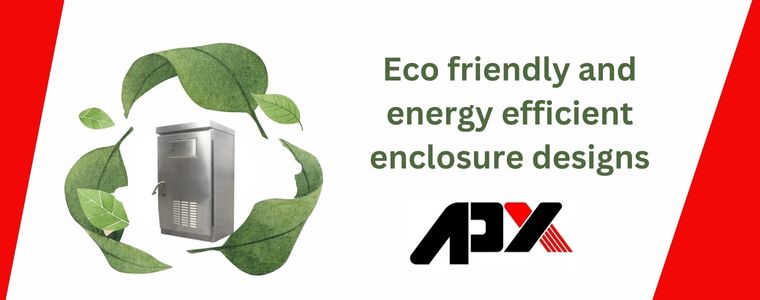Discover how eco-friendly and energy-efficient enclosure design can help reduce your carbon footprint and save on energy costs. Learn about sustainable materials, green building techniques, and innovative technologies that can make your home or building more environmentally friendly.
1. Introduction to Eco-Friendly Enclosure Designs
Understanding the Importance of Sustainable Building Practices
Sustainability isn’t just a buzzword – it’s crucial for the health of our planet. Eco-friendly enclosure designs prioritize energy efficiency, resource conservation, and minimal environmental impact.
Overview of Energy-Efficient Enclosure Design Goals
Energy-efficient enclosure designs aim to reduce energy consumption, lower utility costs, and decrease carbon footprints. By incorporating smart design principles, we can create spaces that are both environmentally responsible and comfortable to inhabit.
2. Principles of Energy Efficiency in Building Enclosures
Key Factors Influencing Energy Performance
From insulation to air sealing, several factors impact a building’s energy efficiency. Understanding these key components can help us create structures that require less energy to heat and cool.
Role of Insulation and Thermal Mass in Enclosure Design
Insulation keeps the inside temperature stable, while thermal mass absorbs and releases heat. By optimizing these elements in enclosure design, we can improve energy efficiency and reduce reliance on artificial heating and cooling systems.
3. Sustainable Materials and Construction Techniques
Selection Criteria for Eco-Friendly Building Materials
Choosing sustainable materials – such as recycled content, low-VOC products, and responsibly sourced wood – is essential for eco-friendly enclosure designs. These materials minimize environmental harm and promote healthier indoor air quality.
Incorporating Recycled and Renewable Resources
Incorporating recycled materials and utilizing renewable resources like bamboo or cork can further enhance the sustainability of a building project. By reusing existing resources, we reduce waste and lessen our impact on the environment.
4. Passive Design Strategies for Energy Efficiency
Utilizing Natural Ventilation and Daylighting
Designing spaces that maximize natural ventilation and daylight reduces the need for artificial lighting and air conditioning. By harnessing these passive strategies, we can create comfortable and energy-efficient environments.
Optimizing Building Orientation and Shading
Careful consideration of a building’s orientation and shading elements can significantly impact its energy performance. By strategically placing windows, overhangs, and landscaping, we can minimize heat gain and loss, ultimately reducing energy consumption.
By incorporating these eco-friendly and energy-efficient enclosure design principles, we can create sustainable buildings that benefit both occupants and the planet.### 5. Innovative Technologies for Eco-Friendly Enclosures
Integration of Smart Building Systems
Imagine a building that knows you so well, it’s practically your best friend. Smart building systems are like the tech-savvy brain of eco-friendly enclosures. They monitor energy usage, adjust lighting and temperature based on occupancy, and even chat with your coffee maker to ensure the perfect brew when you walk in. It’s like having a personal assistant that’s also your wingman for saving the planet.
Advancements in Energy-Efficient Building Envelopes
Let’s talk about the superhero cape of eco-friendly buildings – the energy-efficient building envelope. These high-tech skins are not just for show; they protect your building from energy leaks and harsh weather conditions. With innovative materials and designs, these envelopes are like the fortress of solitude for energy efficiency, keeping your space cozy and comfortable without costing the Earth.
6. Case Studies of Successful Green Building Projects
Residential Eco-Homes: Lessons Learned and Best Practices
Ever dreamt of living in a house that’s as green as your smoothie? Residential eco-homes are the poster children for sustainable living, showcasing energy-saving features like solar panels, rainwater harvesting systems, and natural ventilation. These real-life green oases teach us valuable lessons in blending style with sustainability, proving that you can have your eco-cake and eat it too.
Commercial Green Buildings: Achieving Sustainability Goals
Picture an office building that not only boosts productivity but also slashes carbon emissions like a ninja. Commercial green buildings are the business juggernauts of eco-friendly design, incorporating energy-efficient lighting, smart HVAC systems, and green spaces to create healthier work environments. These success stories in sustainable architecture show us that green is not just a color – it’s a movement towards a brighter future.
7. Benefits and Challenges of Energy-Efficient Enclosure Designs
Economic and Environmental Advantages of Green Buildings
Green buildings are the cool kids of the architecture world, attracting both environmentalists and penny-pinchers with their dual benefits. From lower energy bills to reduced carbon footprints, the economic and environmental advantages of energy-efficient enclosures are a win-win for both your wallet and the planet. It’s like hitting the sustainability jackpot while sipping on a green smoothie – refreshing and guilt-free.
Solving Common Issues and Overcoming Obstacles in Sustainable Design
Not everything in the world of eco-friendly enclosures is a walk in the park; there are hurdles to jump and challenges to conquer. From initial costs to technical complexities, sustainable design can sometimes feel like solving a Rubik’s Cube blindfolded. But fear not, for with innovation and determination, these obstacles can be overcome, turning every stumbling block into a stepping stone towards a greener tomorrow.
Closing Thoughts on Eco-Friendly Enclosure Designs
Embracing environmentally conscious building practices and energy-efficient enclosure designs is not just a trend, but a necessity in today’s world. By incorporating sustainable materials, passive design strategies, and innovative technologies, we can create buildings that not only reduce their environmental footprint but also provide healthier and more comfortable living and working spaces. As we continue to explore the benefits and challenges of energy-efficient enclosures, it is clear that the future of architecture lies in sustainable practices that prioritize both the well-being of occupants and the planet.




